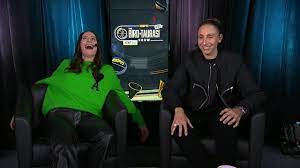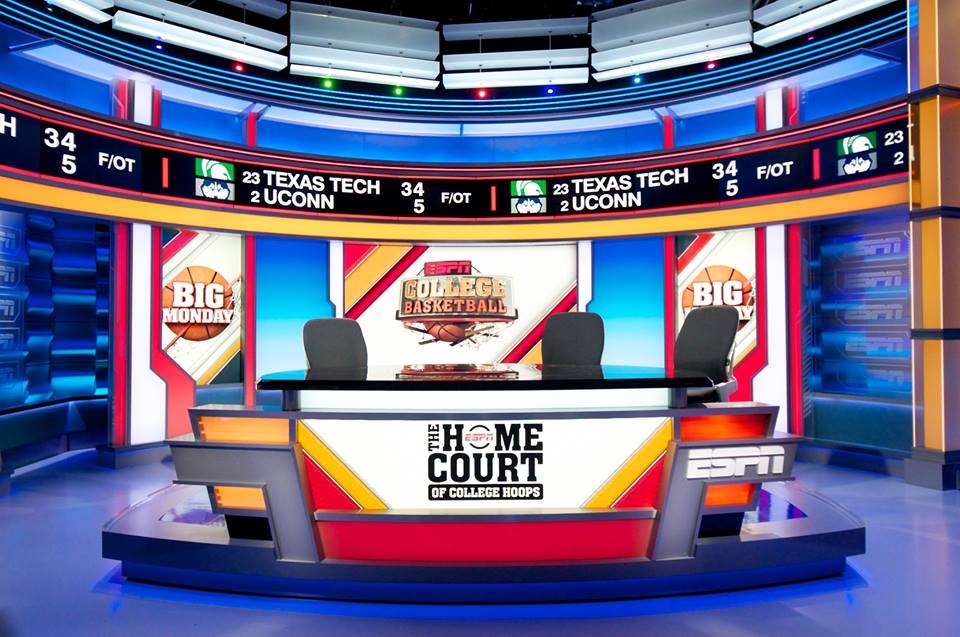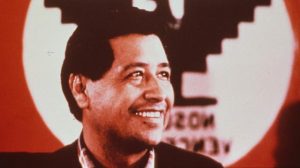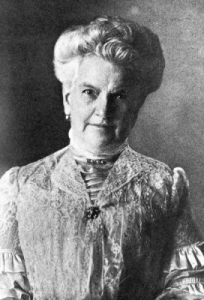What is a sports broadcaster? And what do they do? A sports broadcaster is a person who is a commentator covering any live sporting event. They provide coverage, analytics, and real-life commentary. As a sports commentator, we typically see men in the role during broadcast sporting events. This job field is typically a male-dominated industry. Although we do see some women broadcasting but typically it is mostly men who are in this industry. The problem is that women trying to get into the sports broadcasting industry are having trouble. After all, many are not being taken seriously because they are female and there is belief that can be upheld within the industry that women don’t know what they are talking about when it comes to sports. Another reason why women have a hard time getting into the sports broadcasting industry is because of men like ex-NBA players or ex-NFL players who automatically get the opportunity to do sports broadcasts because of their elite backgrounds.
Women needed to prove themselves in the sports industry between the 1950s to now. Through the years women had to constantly show they were capable of having the knowledge of the sport they were broadcasting. There was an incident in the mid-1970s where a former Miss America, Phyllis George was hired to be a sports broadcaster. It was stated that the only reason why she was hired was because she was a sex symbol for viewers. She was not hired because of her hard work. She was hired so people could admire her as she worked. Women were added to this field because many of the talent decision-makers felt that women added a feminine touch to the male-dominant viewership.1 Although the women were hired for the wrong reasons, these women paved the way for women sports broadcasters in the future. One of the most notable female sports broadcasters is Doris Burke.

Doris Burke is currently working for ESPN, but before she started working at ESPN she first started off her career in 1990 working for her alma mater, Providence College. She began her career on the radio announcing college games for both men and women. Throughout her career, she has been able to make massive strides in her broadcasting opportunities. Although Doris Burke has made strides in her career, she still faced proving to the world that she is capable of doing her job. Doris Burke felt like she always had to prove that she was a smart basketball person. She was pressured to dress a certain way because of how the men in the industry would dress. She always felt like there was pressure to try to fit in. Doris was able to let go of these thoughts when after a conversation with her son he mentioned that people tune into the games she is announcing because she is having fun announcing, if she can have fun announcing the games then the viewers get to have fun watching them.2 Doris Burke’s resilience and perseverance made her who she is today and made her one of the most well-known female NBA sports broadcasters/analysts.

In the sports broadcasting field, we have seen that it is mainly a male-dominated field and it is mainly men who get a better opportunity at these jobs because many viewers view men as more trustworthy since they have more knowledge of sports compared to women. It was stated by Zippia The Career Experts website that 16.5% of sports broadcasters are women and 83.5% of sports broadcasters are men.3 The problem that women face when entering this field is that they are overlooked because of who they are. Lately, we have seen a trend of ex-athletes whether it be ex-NFL players or ex-NBA players who have retired from their sport getting opportunities to work in sports broadcasting solely based on who they are and their image, and how that may increase viewership. Some examples of former athletes doing this are, Tony Romo, Tom Brady, JJ Redick, and Rob Gronkowski and they are just a few notable athletes who have retired and entered the sports broadcasting field. Although this is not a bad thing, this does affect the chances of other women sports broadcasters/analysts who want a shot at those jobs. The women are being overlooked for these positions because of these former athletes getting the opportunity just based on their player image. Although women are overlooked when they enter this field of work, many have made the best out of their situation and have had an impact. For example, when Sue Bird and Diana Taurasi were commentating in the women’s March Madness final four games many people found their commentating and live action of the game to be entertaining. Their commentating of the game and the joy and laughter that Sue Bird and Diana Taurasi brought to their broadcast received so many positive reviews that as of right now they are continuing to provide commentary for the 2024 NCAA Women’s March Madness games.

Although there are men who get more opportunities than women due to their elite background and also because men were seen as more trustworthy in the sports industry, sports commentators like Doris Burke have paved the way and inspired many young women who are interested in the sports broadcasting field. As time has gone by, we have seen an increase in women entering the sports broadcast industry. Although some people look down on women with on-camera broadcasting positions, women in the sports industry are starting to make a difference, from collegiate athletes to professional athletes they are making their mark on the sports broadcasting industry.
- Grubb, Max V., and Theresa Billiot. 2010. “Women Sportscasters: Navigating a Masculine Domain.” Journal of Gender Studies 19 (1): 87–93. doi:10.1080/09589230903525460. ↵
- “Doris Burke Wants More Women in Sports Media.” The New York Times Magazine, December 24, 2017, 58(L). Gale General OneFile (accessed March 25, 2024). https://link.gale.com/apps/doc/A520140537/ITOF?u=txshracd2556&sid=bookmark-ITOF&xid=0aa29559. ↵
- “Sports Broadcaster Demographics and Statistics 2024: Number of Sports Broadcasters in the US.” Sports Broadcaster Demographics and Statistics 2024: Number Of Sports Broadcasters In The US, July 21, 2023. https://www.zippia.com/sports-broadcaster-jobs/demographics/. ↵



1 comment
Amrie Cortez
Your article was very informative. I did not know much about Doris Burke and her success, I think that’s where women being overlooked is played. I feel it is unfair that men like Tom Brady and former athletes are chosen first when getting the opportunity to enter the broadcasting atmosphere. I think women and even men who have real and previous experience should be considered. Former athletes should make guest appearances but not automatically be the main commentators.